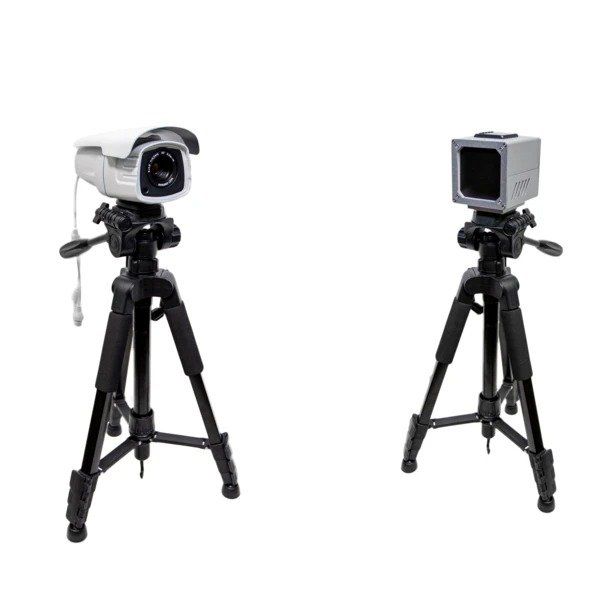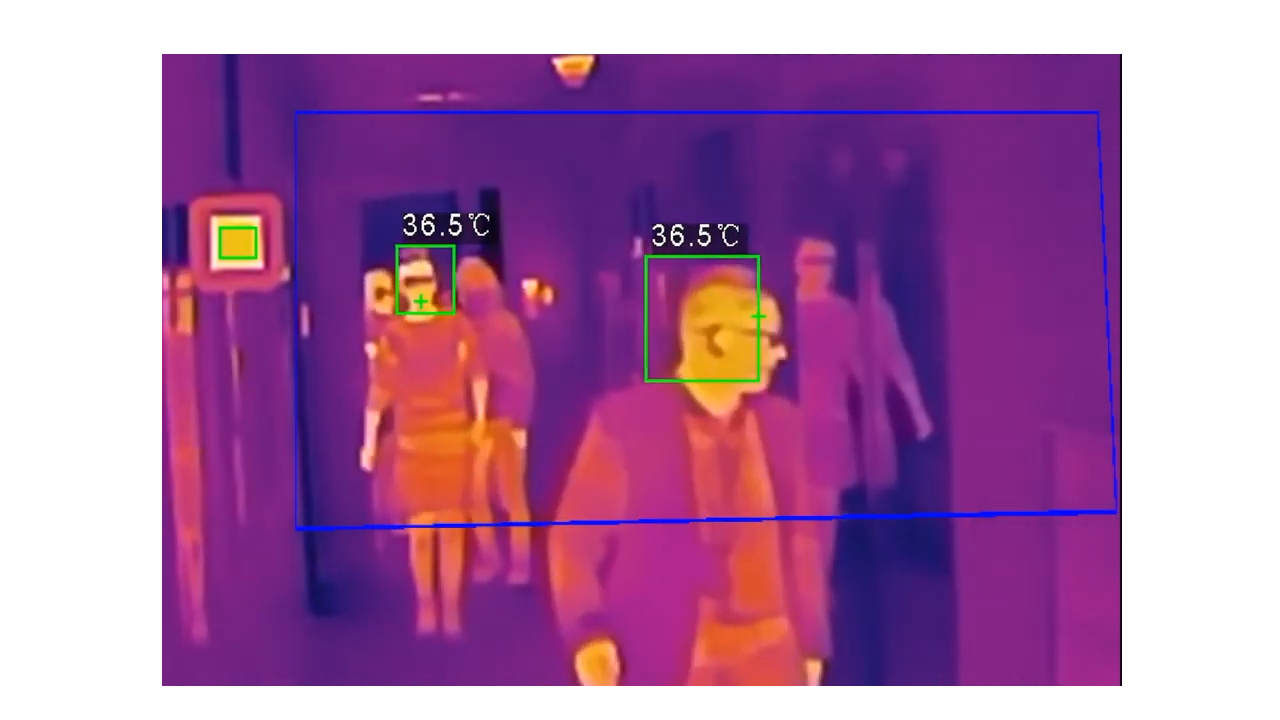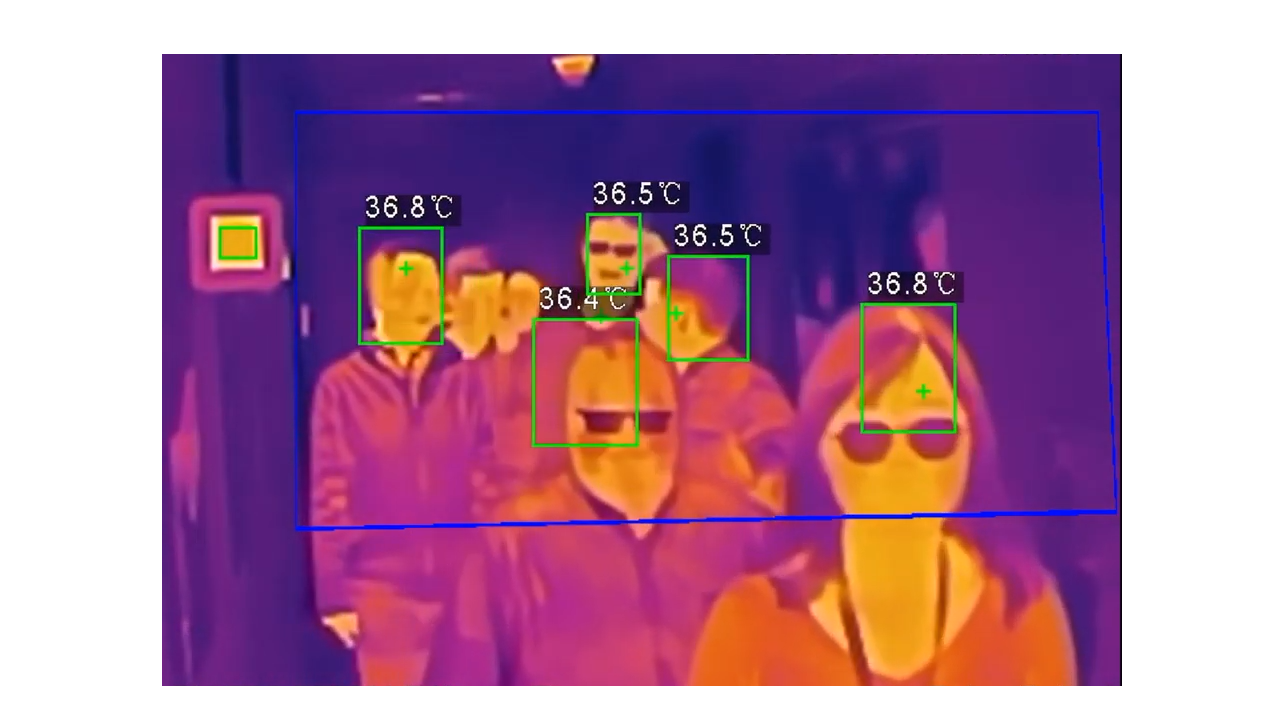Y-Q11
Y-Q11 Thermal Hybrid Camera
No one should be at work with a fever. Help slow the spread of illness- take care of your employees and students.
- Instant measurement response
- Accuracy of ±0.3 degrees
- Live video monitoring and AI Search by time or faces
- Efficiently scans groups of up to 50 people in real time.
Product description
The Thermal Hybrid Camera is faster, more sanitary way to identify a person in a large group with an elevated temperature. The camera can simultaneously detect the temperature of up to 50 people, in real time, with a detection accuracy of 0.3° C/0.54° F. The system immediately sends alerts upon detection of individuals with high body temperatures, minimizing infection risks in your organization. The hybrid technology of the camera allows thermal measurement as well as regular video surveillance. This system is ideal for industrial sectors, and companies that are large and have high-volume traffic.
Product Includes:
- (1) Hybrid Q11 Camera
- (1) Heat Source
- (2) Tripods
- (1) Temperature Screening Software
Product details
Dimensions: 9.2 x 3 x 3.3 Inches
Temperature measurement time : Less than 0.Ss
for 95% of readings
Operates with minimum distance of 15 cm/6 in
Photograph function and SD card storage
Non-contact temperature measurement
download spec sheet →
Center for Disease Control & Prevention Recommendations
Fever
CDC considers a person to have a fever when he or she has a measured temperature of 100.4° F (38° C) or greater, or feels warm to the touch, or gives a history of feeling feverish.Note: Even though measured temperature is the preferred and most accurate method to determine fever, it is not always possible to take a person’s temperature. In certain situations, other methods of detecting a possible fever should be considered:
- self-reported history of feeling feverish when a thermometer is not available or the ill person has taken medication that would lower the measured temperature.
- the person feels warm to the touch
- appearance of a flushed face, glassy eyes, or chills if it is not feasible to touch the person or if the person does not report feeling feverish.
The presence of fever suggests an infectious cause, but fever is not always present with an infection.
Prevent and Reduce Transmission Among Employees
Monitor federal, state, and local public health communications about COVID-19 regulations, guidance, and recommendations and ensure that workers have access to that information. Frequently check the CDC COVID-19 website.
Actively encourage sick employees to stay home
Employees who have symptoms should notify their supervisor and stay home. CDC recommends testing for people with any signs or symptoms of COVID-19 and for all close contacts of persons with COVID-19.
Consider conducting daily in-person or virtual health checks
(e.g., symptom and temperature screening) of employees before they enter the facility, in accordance with state and local public health authorities and, if available, your occupational health services. Screening and health checks are not a replacement for other protective measures such as social distancing, mask wearing (unless respirators or face masks are required), and engineering controls, including proper ventilation. Symptom and temperature screening cannot identify people with SARS-CoV-2 infection who are asymptomatic (do not have symptoms) or are presymptomatic (have not developed signs or symptoms yet but will later).
For in-person health checks, conduct them safely and respectfully and in a way that maintains social distancing of workers in and entering the screening area. Workers should not enter the worksite past the screening area if any of the following are present:
- Symptoms of COVID-19
- Fever of 100.4 degrees Fahrenheit (oF) or higher or report feeling feverish
- Undergoing evaluation for SARS-CoV-2 infection (such as pending viral test)
- Diagnosis of SARS-CoV-2 infection in the prior 10 days
- Close contact to someone with SARS-CoV-2 infection during the prior 14 days










